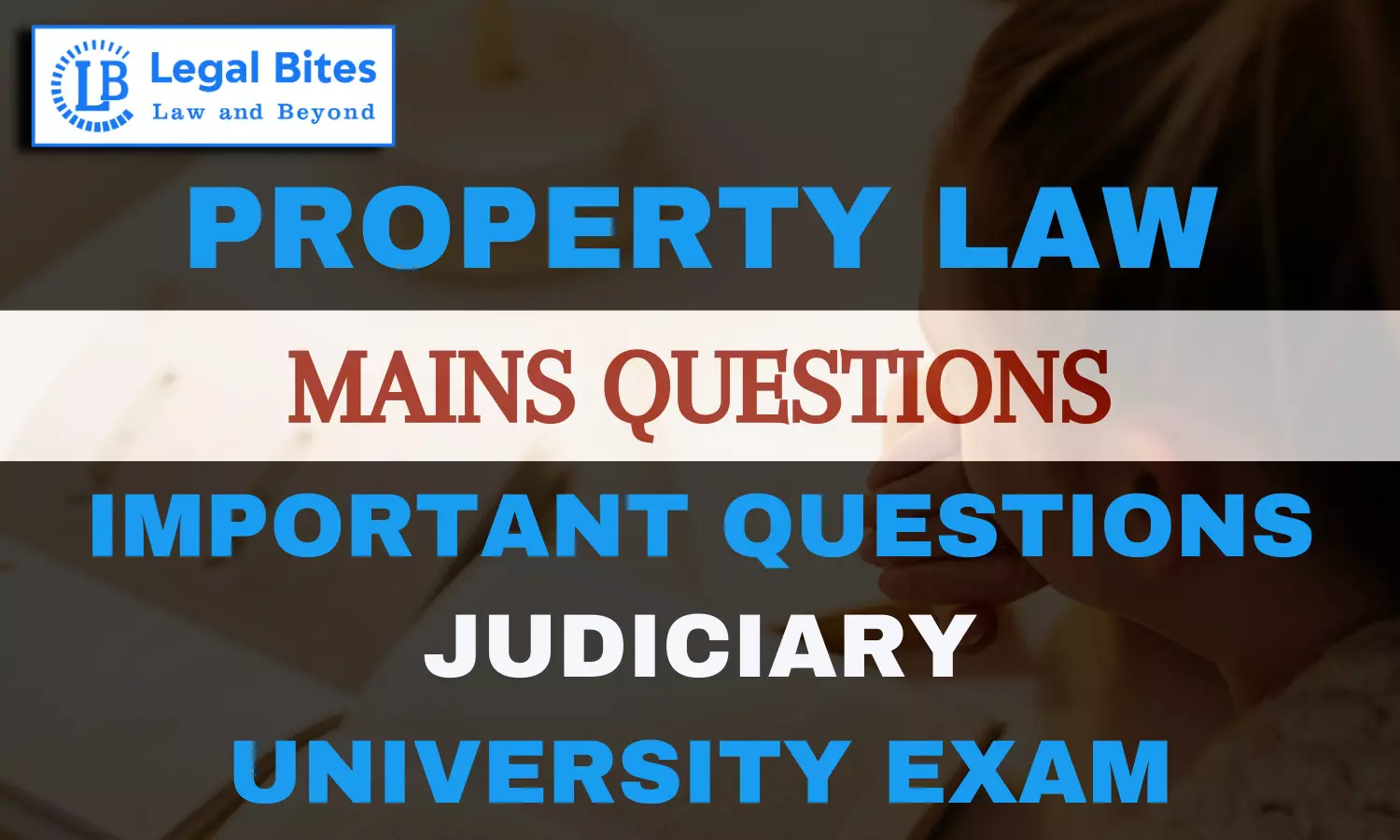Mr. A (landlord) and Mr. B (tenant) entered into a lease agreement...Section 108 of the Transfer of Property Act, 1882
Find the answer to the mains question of Property Law only on Legal Bites.

Question: Mr. A (landlord) and Mr. B (tenant) entered into a lease agreement which contained clauses concerning the maintenance of the leased property, but the specifics regarding the repair obligations and sub-letting were ambiguous. After the lease commenced, the property began to deteriorate, requiring substantial repairs. Additionally, Mr. B sought to sub-let a portion of the property to a third party to offset his costs. Further, Mr. B constructed an unauthorized structure outside...
Question: Mr. A (landlord) and Mr. B (tenant) entered into a lease agreement which contained clauses concerning the maintenance of the leased property, but the specifics regarding the repair obligations and sub-letting were ambiguous. After the lease commenced, the property began to deteriorate, requiring substantial repairs.
Additionally, Mr. B sought to sub-let a portion of the property to a third party to offset his costs. Further, Mr. B constructed an unauthorized structure outside the tenanted portion of the property. Under Section 108 of the Transfer of Property Act, 1882, who is responsible for carrying out substantial repairs when the leased property begins to deteriorate, and what are the legal implications if the tenant, Mr. B. decides to sub-let a portion of the property without clear provisions in the lease agreement?
If a tenant constructs an unauthorised structure outside the tenanted portion of the property, can the landlord seek eviction under Section 108 of the Transfer of Property Act, 1882, on the grounds of this unauthorised construction?
Substantiate your answer by explaining the rights and liabilities of lessor and lessee under Section 108 of the Transfer of Property Act, 1882 and also by quoting the relevant case-laws. [OJS 2023]
Find the answer to the mains question of Property Law only on Legal Bites. [Mr. A (landlord) and Mr. B (tenant) entered into a lease agreement.... Substantiate your answer....Section 108 of the Transfer of Property Act, 1882]
Answer
Section 108 of the Transfer of Property Act, 1882 outlines the rights and liabilities of lessor and lessee. The section is divided into two parts: clauses (a) to (h) lay down the liabilities and rights of the lessor, and clauses (i) to (q) deal with those of the lessee.
1. Responsibility for Repairs
Under Section 108(f), the lessor is bound to keep the property in a condition suitable for the purpose for which it was leased at the time of the lease. However, Section 108(m) places a duty on the lessee to take reasonable care of the property and to make minor repairs necessary for its upkeep. When it comes to substantial repairs or structural deterioration, unless otherwise agreed in the lease, the responsibility generally lies with the lessor.
In the absence of a specific clause delegating this obligation to the tenant, Mr. A, the landlord would be responsible for carrying out the substantial repairs necessary to prevent deterioration. The tenant may also invoke his right under Section 108(f) if the property becomes unfit for the intended use.
In Nanalal Girdharlal v. Gulamnabi Jamalbhai Motorwala, AIR 1973 Guj 131, it was held that where the landlord fails to carry out substantial repairs, the tenant may even claim a proportionate reduction in rent or, in extreme cases, may vacate the premises and avoid liability for future rent.
2. Sub-letting in Absence of Clear Provisions
Section 108(j) of the Act provides that the lessee, in the absence of a contract to the contrary, may transfer absolutely or by way of mortgage or sub-lease his interest in the property leased. Therefore, if the lease agreement is silent or ambiguous regarding sub-letting, Mr. B is legally entitled to sub-let the property or a portion thereof.
However, if the lease contains an implied or express restriction against sub-letting, such action without the landlord's consent may be construed as a breach of the terms of lease and can be a ground for eviction under applicable rent control laws or under Section 111(g) of the Transfer of Property Act (forfeiture due to breach of an express condition).
In V. Dhanapal Chettiar v. Yesodai Ammal, (1979) 4 SCC 214, the Supreme Court held that mere violation of sub-letting terms does not automatically lead to eviction; a notice to quit must also be served unless exempted by statute.
3. Unauthorised Construction by Tenant
As per Section 108(p), the lessee must not, without the landlord’s consent, erect any permanent structure on the property, except for agricultural purposes. In the given case, Mr. B constructed an unauthorised structure outside the leased premises, which amounts to unauthorised occupation or encroachment.
This action can be taken as a violation of the lease terms, and Mr. A is entitled to seek eviction under Section 108(q) and Section 111(g). Even if the lease agreement is ambiguous, constructing outside the demised premises is beyond the tenant's rights and could amount to misuse and encroachment of landlord's property.
In Rashik Lal v. Shah Gokul Das, AIR 1989 SC 1703, the Court held that making unauthorised constructions or encroaching upon property beyond the leased portion constitutes material alteration, and is a valid ground for eviction.
To summarise:
- Substantial repairs fall under the responsibility of the landlord unless expressly transferred to the tenant.
- Sub-letting, in the absence of a contrary clause, is permitted under Section 108(j).
- Unauthorised construction outside the tenanted area is illegal, and the landlord can seek eviction for breach under Sections 108 and 111 of the Transfer of Property Act, 1882.
These interpretations reflect the general principles established by the Indian judiciary to maintain the sanctity of leasehold rights while protecting the proprietary interests of landlords.

Mayank Shekhar
Mayank is an alumnus of the prestigious Faculty of Law, Delhi University. Under his leadership, Legal Bites has been researching and developing resources through blogging, educational resources, competitions, and seminars.
